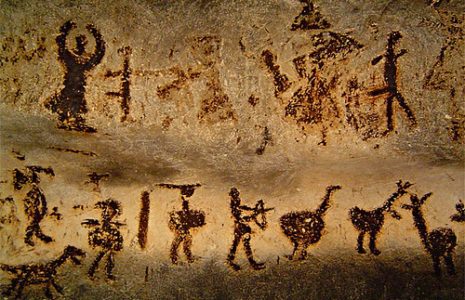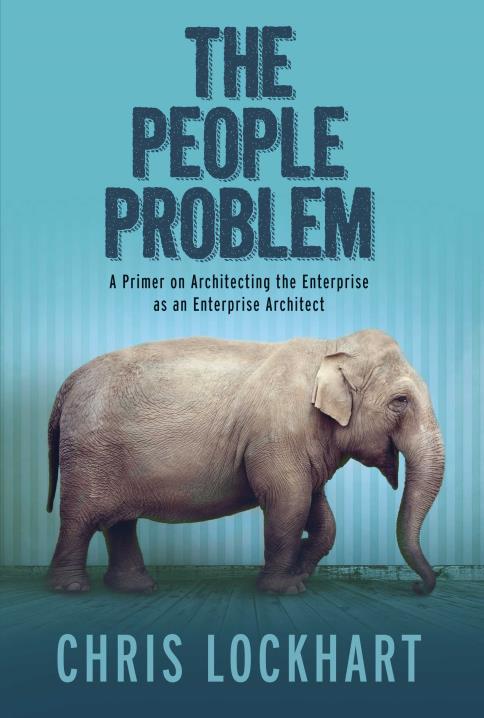Meaty Revelation
I was grilling the most amazing choice sirloin. I scrounged through my parents’ pantry for some seasonings, discarding all manner of materials stored in quantities apparently in anticipation of nuclear winter. I settled on a particular steak seasoning eventually, savoring the smell of its peppery loveliness. As I stood over the grill, warding off the encroaching coolness of late summer evening, I happened to glance through the window and noticed my wife laughing hysterically.
Being the performer I am, I presumed she was laughing at the vague hint of a rhythmic dance I had launched into in response to the beat from a marching band at the local football game. The field wasn’t too far away and the sounds of the drums and brass easily traveled across the community. I don’t have rhythm and felt this was an appropriate thing to laugh at me for. I broke into a grin as I caught her eye. She continued laughing even as I had halted the hip sway. I realized she wasn’t laughing at me but at something my mother was showing her. Photos of my childhood, it seemed, had been produced.
I could see my mother’s arms gesticulating wildly as she entertained my wife with some unknown tale, replete with photographic visual aids.
“Steaks are ready!” I announced as I burst through the door, stumbling on the mat in my haste to put a stop to whatever mockery was in full swing. “Hey. Hey. What’s going on in here?” I managed.
“Your mother was just telling me about the time…” my wife began, between laughs. “The time you tripped on the dock in Aruba and slid down the slimy boat ramp into the harbor!” Ah yes. There it was. With photos to prove it. It was a painful memory which I had long suppressed and sought to expunge form the historical record.
“Mom…” I started. The pained look on my face clearly expressed my desire to have the telling of the story brought to an end.
“Don’t worry honey,” she said. “I didn’t tell her the bad part yet.” Oh great. Please let there be no photos of what happened next with the herd of goats.
“But mother…”
“Honey. It’s okay. It’s our stories that give our lives meaning.”
At the center of the universe, but in context
I recently attended a conference on storytelling. It was billed as a day long discussion of social stories and ways in which your company can/should/will take advantage of ongoing developments in the arena of social media to advance your product. I have to say I went in thinking I’d be overwhelmed with feel-good hippy crap about finding your inner child and letting him innovate as your chi flows unrestricted. To be fair, there was some of that. But the main thrust was more in the vein of public relations, communications and sales. How to tell a story that is meaningful and says something about your company, your brand, your experience, your employees, or you. It was an amazing day of stepping outside my normal thinking routine that I’ve adopted over the years to fit into my industry and allowed me to sit and observe and absorb from a thought position that is certainly closer to who I am. It felt very natural and was immensely enjoyable.
At first blush you might think tangentially related at best to my past work in IT. And to be honest, it probably is. The audience was mostly creative types. Folks who work in ad agencies, PR firms, marketing firms, people who do graphic design, performance art, web design, video production, social media consultants, SEO experts, etc. There was a lot of blue dyed hair, and not the geriatric kind. There was actually a person wearing a pink feather ‘tail’. I may have been one of only a handful of people from the traditional world of information technology and certainly the only management consultant. Typically, those of us from this part of creation tend to be less focused on channeling our chi or the amazing colors of a rainbow or trying to determine who we are in the grand scheme of the cosmos. Traditional IT folks are usually more focused on the latest build of whatever the latest development framework is. Your average management consultant has several devices going trying to absorb the latest in corporate org model design.
So to say it made natural sense for me to be there is maybe a bit of a stretch on the surface. After all, what does an Enterprise Architect primarily engaged in management consulting need from social media marketing or storytelling? The focus in most discussion on the topic of social media tends to couple the term social media invariably with the terms marketing and branding. In other words, there is a widespread perspective among social media consultants that social media is ultimately about the art of communication. Isn’t that the domain of the marketing department?
The knowledge of the Gods
While I have my own views about what social media is or isn’t (I think marketing is merely one small part, for example), I do believe that at its center it is about interaction and communication. The social experience, whether it is Facebook or Twitter or Instagram or Snapchat or <insert meaningless gibberish company name here>, it is all about connecting with one another in meaningful ways. A mega, super, hyperactive version of painting details of the mastodon hunt on the walls of a fire lit cave.
And what is the ultimate purpose of this connecting with each other, this sharing of experience that makes us who we are? For me, the ultimate purpose is communicate knowledge and share our thoughts. We connect with each other because we want to express our feelings, our opinions, our knowledge, our experiences. We share this information with each other in order to make sense of the world around us and our position in it. We are, in effect, absolutely defining who we are in the grand scheme of the cosmos. In this respect, we are each partially fitting the archetype of Prometheus, sharing divine knowledge with mankind. Luckily we aren’t normally punished eternally in horrible and cruel ways for this, although some are, but we do fit the mold in other respects.
Connecting with each other to share our divine knowledge of who we are, why we are and where we’ve been is intrinsic to our nature. It helps explain why social tools have been so immensely popular. We as a species have always had social media. We didn’t have the tools we have now. But we always had the drive to tell stories to each other. It hasn’t changed. It’s just that now our handprints on a cave wall are on a galactically awesome scale.
A tale to be woven
When knowledge needs to be communicated, whatever the medium, we tend to lean on commonalities of lexicon as much as possible. In the world of IT this devolves into overuse of buzz words, acronyms, technobabble and jargon. In the world of strategy it is often expressed as abstract platitudes and meaningless phrases. We reduce the communication of knowledge to technical details and facts, result-oriented aspects like ROI and CBA and TCO and concerns about possibly-conjured problems like scalability and flexibility. None of this communicates knowledge. It communicates nothing beyond the dry details of execution. ROI is a must-have number for financial planning and decision making, but it conveys nothing about the efficacy of a solution to a business problem. We’re communicating information, but not knowledge.
How do we, as IT practitioners, as enterprise architects, as consultants, connect with our peers throughout the enterprise and communicate knowledge that has intrinsic (or divine) value? How do we manage, with esoteric concepts of ‘requirements’ or ‘domain models’ or ‘services’, to convey business and technical knowledge in ways that are meaningful to the intended audience? How do we avoid confounding technical doublespeak and meaningless consulting jargon? How do we cut through the one-mind group-think of the ways things are done and actually communicate something innovative? How do we demonstrate that there is actual value behind the dry numbers of a total cost of ownership analysis that will positively impact the business and our collective understanding of how we fit in the grand scheme of the cosmos? How do we provide context for our business and technical solutions?
We tell stories.
That’s right. We express our ideas, communicate our knowledge, impart our solution to a business problem by presenting it in the time honored format that has served mankind since we walked out of Africa. We tell stories.
For every business problem there may or may not be a technical solution. But for every technical solution for a business problem there is absolutely a story that can be told. It has a beginning, a middle and an end. It has protagonists and antagonists. It has morals to be heeded. The solution story isn’t a bunch of foofy nonsense. It is a professional weaving of a business and technical tale. It is a means by which we show that we understand the problem at hand, demonstrate that we have one or more potential technical solutions and describe how those solutions will improve the situation. It isn’t a project plan. It isn’t a Six Sigma SIPOC. It is a coherent, logical storyline from problem to solution that stands on its own. It makes sense to anyone who reads it. It connects the solution providers to the problem holders. It demonstrates that IT gets it and that IT isn’t merely a bunch of gearheads looking to hammer every nail with same (super expensive) hammer.
The solution story has a flow. It has a natural cadence. It moves from concept to reality in logical steps. It takes into account the variables along the path to problem solution. Most importantly, it feels natural. It feels like it makes sense. It garners incredible support naturally, not by brute force of argument but by explicit, rational progression. It delineates the technical solution in terms and in a manner that everyone ‘gets’. It becomes a narrative that lives and breathes whether or not you with your specific knowledge remain attached to the project.
Give the solution a meaning
The art of storytelling has nothing to do with chi or blue hair or branding. It has to do with the ability to communicate our ideas to our peers. You don’t need a liberal arts degree for this, although it helps. You simply need to step back, observe the problem in context and construct a narrative that logically leads to the solution. Building architects in particular should have this ability well honed. It is incumbent on architects to understand the problem of lack of shelter, the forces of weather at work and be able to describe the design of a house that solves the problems at hand. Their ability to tell this story in ways understandable to the homeowner, the workers, the electricians, the painters, the landscapers, etc., is critical to building the right house in the right way. It is no different for enterprise architects within a company.
Without context, solutions are disconnected from the rest of the enterprise. Without a meaningful, natural, human way of putting them in context, we are left with ugly constructs that require certifications and hours of training. We are born with the only training we need in order to communicate the business and technical solution story to our stakeholders. Granted, some will have more ability than others. Yet the fact remains that overlooking the innate human ability for connecting via stories removes a critical tool from our toolbox and renders us impotent to impart our knowledge effectively.


